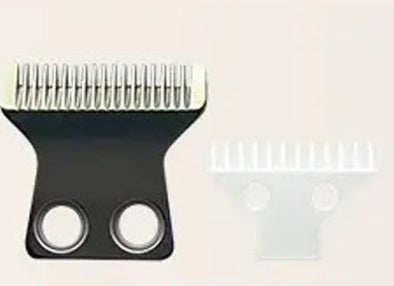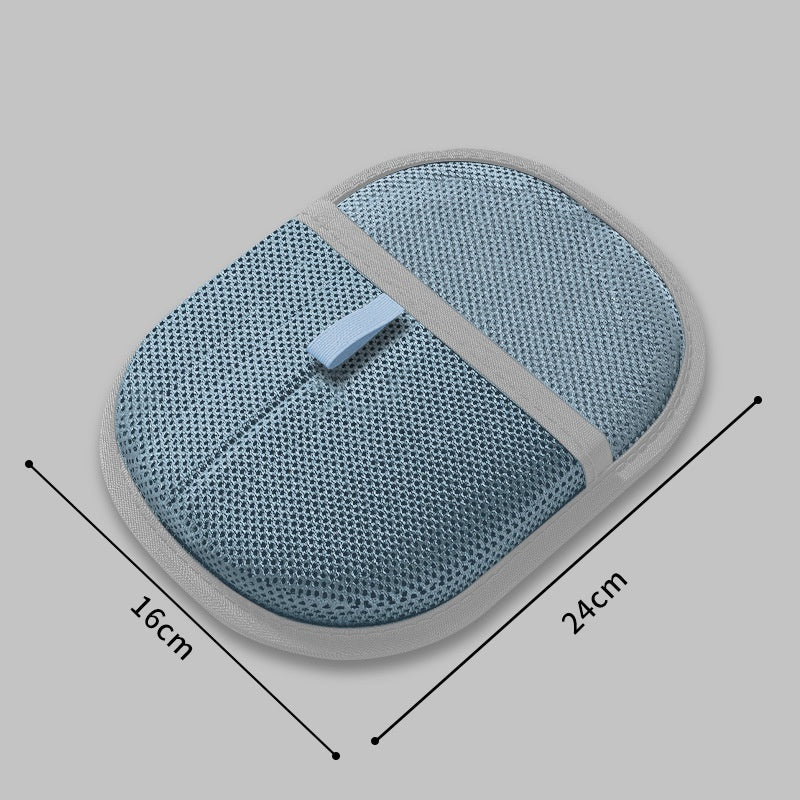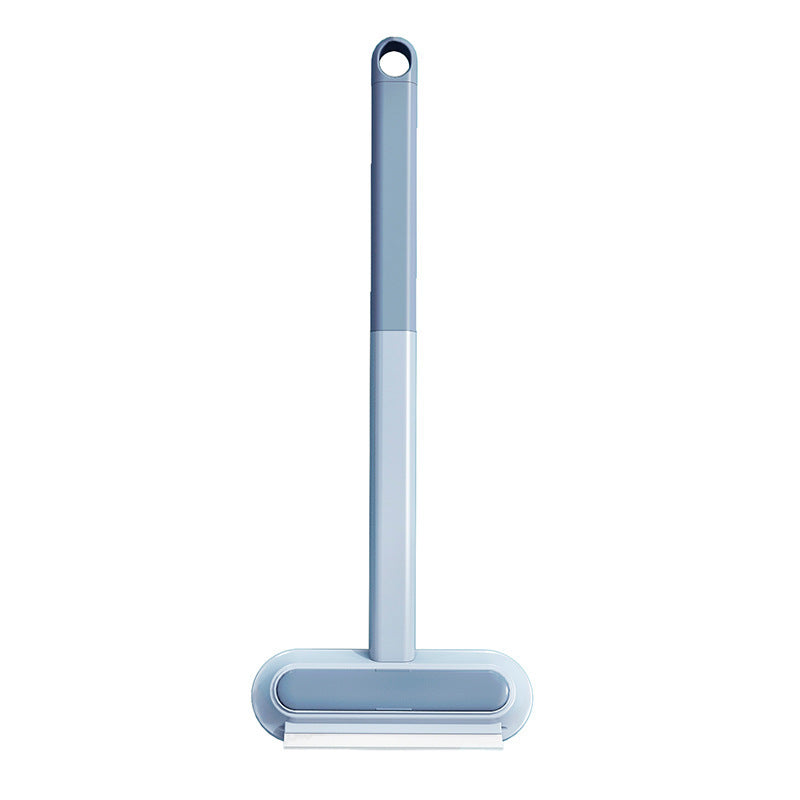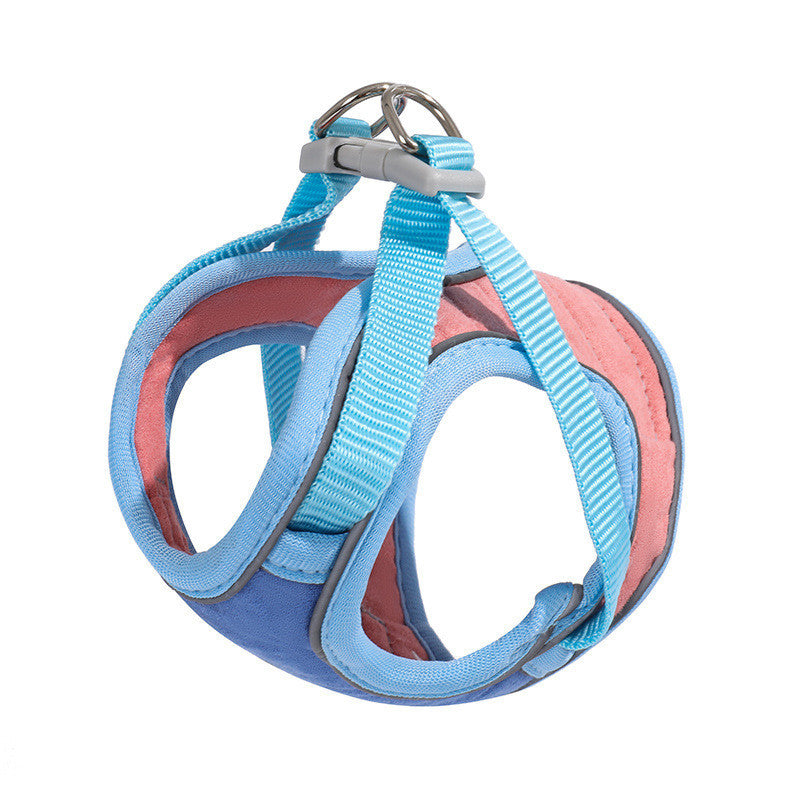Cats are naturally curious creatures, and their exploratory nature can sometimes lead to accidents, injuries, or damage to your belongings.
Their incredible agility, climbing abilities, and tendency to investigate everything with their mouths make them particularly vulnerable to household hazards that we might never consider dangerous.
The good news is that you can make your house significantly safer for your feline friend without sacrificing style or functionality. Whether you're a new cat owner preparing for your first furry family member or a seasoned cat parent looking to ensure your home meets the highest safety standards, comprehensive cat-proofing is essential for peace of mind and your cat's wellbeing.
This detailed room-by-room guide will help you create a secure environment that keeps your cat happy, healthy, and safe whilst protecting your cherished belongings from curious paws and playful antics.
Why Cat-Proofing Matters: The Statistics Behind Safety
According to RSPCA Australia, accidents are one of the leading causes of injury and death in domestic cats, with many of these incidents occurring within the home environment. By taking proactive preventive measures, you can dramatically reduce the risk of falls, poisonings, electrical accidents, or other household hazards that could harm your beloved companion.
Key Safety Statistics:
- Over 40% of feline emergencies involve household accidents that could have been prevented
- Poisoning cases increase by 25% during holiday seasons due to decorative plants and foods
- Window falls account for numerous serious injuries, particularly in high-rise buildings
- Electrical cord injuries peak during kitten season when young cats are most exploratory
The Benefits of Proper Cat-Proofing:
- Reduced Veterinary Bills: Prevention is significantly less expensive than emergency treatment
- Peace of Mind: Knowing your home is safe allows you to relax and enjoy your cat's company
- Protected Belongings: Safeguarding valuables from curious paws and claws
- Enhanced Bonding: A safe cat is a confident cat, leading to better human-animal relationships
- Longevity: Accident prevention contributes to longer, healthier feline lives
Understanding Your Cat's Natural Behaviours
Before diving into specific cat-proofing strategies, it's crucial to understand why cats behave the way they do. This knowledge helps you anticipate potential hazards and create more effective safety measures.
Natural Feline Behaviours That Create Risks:
- Climbing: Cats instinctively seek high vantage points for security and hunting advantages
- Scratching: Essential for claw maintenance and territorial marking
- Chewing: Exploration through taste and texture, particularly dangerous with electrical cords
- Hiding: Seeking small, enclosed spaces that might contain hazards
- Hunting: Pouncing on moving objects, including dangling cords or small items
Comprehensive Room-by-Room Safety Guide
1. Living Room: The Heart of Home Safety
The living room is often where your cat will spend considerable time, making it crucial to address potential hazards without compromising comfort or aesthetics.
Electrical Safety:
- Secure All Cords: Use cord covers, cable management systems, or furniture placement to keep electrical cords out of reach. Consider cord protectors made from split tubing for a clean, professional look
- Outlet Protection: Install outlet covers or sliding outlet plugs to prevent curious paws from investigating electrical sources
- Entertainment Centre Safety: Secure loose cables behind televisions and stereo equipment using cable management boxes
Furniture and Décor Considerations:
- Remove Fragile Items: Place breakable ornaments, vases, and collectibles in closed cabinets or on high shelves with secure backing
- Anchor Heavy Furniture: Secure tall bookcases, entertainment centres, and cabinets to walls to prevent tipping if your cat climbs them
- Choose Cat-Friendly Fabrics: Opt for furniture materials that resist scratching and are easy to clean
Scratching Solutions:
- Install Multiple Scratching Posts: Place tall, sturdy scratching posts near furniture your cat might otherwise target
- Provide Variety: Offer different scratching surfaces including sisal, carpet, and cardboard to satisfy individual preferences
- Strategic Placement: Position scratching alternatives directly in front of or beside furniture you want to protect
2. Kitchen: Navigating Culinary Hazards
The kitchen presents numerous potential dangers, from toxic foods to sharp objects and hot surfaces.
Cabinet and Storage Safety:
- Install Childproof Locks: Use magnetic or spring-loaded locks on cabinets containing cleaning supplies, medications, sharp objects, or toxic foods
- Secure the Pantry: Keep dry goods in sealed containers to prevent access to potentially harmful items like chocolate, onions, or xylitol-containing products
- Refrigerator Safety: Ensure your cat cannot access the space behind or underneath the refrigerator where they might become trapped
Appliance Precautions:
- Oven and Stovetop Protection: Always check inside ovens and microwaves before use, as cats may seek warm hiding spots
- Dishwasher Awareness: Establish a routine of checking the dishwasher before starting cycles
- Small Appliance Storage: Unplug and store small appliances when not in use to prevent accidental activation
Toxic Substance Management:
- Cleaning Product Storage: Store all cleaning supplies in high, locked cabinets, never under the sink where curious cats can easily access them
- Food Safety: Keep chocolate, grapes, onions, garlic, and other toxic foods in sealed, inaccessible containers
- Medication Security: Store all human and pet medications in locked medicine cabinets
Counter Safety:
- Non-Slip Solutions: Use drawer liners or non-slip mats to prevent items from sliding off surfaces
- Knife Block Placement: Secure knife blocks or store knives in locked drawers
- Hot Surface Awareness: Consider stove-top covers when appliances aren't in use
3. Bedroom: Creating a Peaceful Sanctuary
Bedrooms should be safe havens for both you and your cat, but they contain unique hazards that require attention.
Window Safety:
- Install Proper Screens: Ensure all windows have secure, pet-safe screens that can support your cat's weight
- Window Stop Installation: Use window stops to prevent windows from opening wide enough for your cat to fall through
- Blind Cord Safety: Cut or secure blind cords, or replace with cordless alternatives to prevent strangulation hazards
Electrical and Cable Management:
- Bedside Lamp Safety: Secure lamp cords and use cord protectors to prevent chewing
- Charging Station Organisation: Create a designated charging area with cord management to keep phone and device chargers organised and safe
- Clock and Electronics: Secure small electronics that could be knocked off nightstands
Textile and Bedding Safety:
- Secure Loose Bedding: Ensure sheets and blankets are properly fitted to prevent entanglement
- Laundry Basket Placement: Keep dirty laundry in closed hampers to prevent ingestion of fabric softener residue or small clothing items
- Jewellery Storage: Store jewellery, hair ties, and small accessories in closed containers
4. Bathroom: Managing Moisture and Medications
Bathrooms present unique challenges with their combination of water, chemicals, and confined spaces.
Water Safety:
- Toilet Lid Locks: Install toilet lid locks to prevent drowning, especially important for kittens or senior cats
- Bathtub Precautions: Keep bathtub drains closed and never leave standing water unattended
- Shower Door Safety: Ensure shower doors close securely to prevent your cat from becoming trapped
Chemical and Medication Storage:
- Medicine Cabinet Security: Install childproof locks on medicine cabinets and keep all medications in original containers
- Toiletry Organisation: Store shampoos, conditioners, and personal care products in closed cabinets
- Cleaning Product Alternatives: Choose pet-safe, non-toxic cleaning products whenever possible
Small Space Considerations:
- Ventilation Safety: Ensure adequate ventilation and never leave your cat unattended in closed bathrooms for extended periods
- Toilet Paper Protection: Consider toilet paper holders that prevent unrolling, as excessive ingestion can cause blockages
- Trash Can Security: Use lidded bins for bathroom waste, particularly for items that might contain medication residue
5. Entryway: Controlling Access and First Impressions
The entryway is your cat's first line of defence against outdoor dangers and visiting guests.
Door and Access Management:
- Install Baby Gates: Use expandable baby gates to control access to certain areas without permanently blocking passages
- Pet Door Consideration: If installing pet doors, choose models with security features and proper sizing
- Guest Management: Create systems to prevent your cat from escaping when visitors arrive
Storage Solutions:
- Coat Closet Organisation: Keep outdoor clothing in closed closets to prevent your cat from hiding in pockets or sleeves
- Shoe Storage: Use closed shoe storage to prevent chewing on laces or ingestion of outdoor contaminants
- Umbrella and Accessory Safety: Store umbrellas and walking sticks securely to prevent tip-over injuries
Flooring and Safety:
- Non-Slip Mats: Install washable, non-slip mats to catch dirt and provide traction
- Seasonal Decoration Care: Rotate seasonal decorations safely, avoiding toxic plants or small decorative items
6. Outdoor Areas: Extending Safety Beyond Indoor Walls
For cats with outdoor access, extending safety measures to patios, balconies, and garden areas is crucial.
Balcony and Patio Safety:
- Install Cat-Safe Railings: Add mesh or plexiglass extensions to railings to prevent falls
- Create a Catio: Build or purchase an enclosed outdoor run that allows fresh air and stimulation without risks
- Furniture Anchoring: Secure outdoor furniture to prevent tipping or movement in wind
Garden and Landscaping:
- Plant Selection: Replace toxic plants with cat-safe alternatives and research all new additions
- Pest Control Alternatives: Use pet-safe methods for insect and rodent control
- Water Feature Safety: Ensure pools, ponds, or water features have escape routes or are covered when unsupervised
Garage and Utility Area Safety:
- Engine Checks: Always check car engines before starting, as cats seek warm hiding spots
- Chemical Storage: Store antifreeze, oil, and other automotive chemicals in locked cabinets
- Tool Organisation: Keep sharp tools and small hardware in closed containers
Comprehensive Plant Safety Guide
Plants can significantly enhance your home's aesthetics while providing environmental enrichment for your cat, but choosing the right varieties is crucial for safety.
Cat-Safe Plant Options:
- Spider Plant (Chlorophytum comosum): Easy to grow, produces oxygen, and safe for curious nibbling
- Areca Palm (Dypsis lutescens): Adds tropical flair whilst being completely non-toxic
- Cat Grass (Avena sativa): Specifically grown for cats to aid digestion and satisfy their need to graze
- Boston Fern (Nephrolepis exaltata): Beautiful, safe, and helps improve indoor air quality
- Parlour Palm (Chamaedorea elegans): Elegant and completely safe for cats
- Prayer Plant (Maranta leuconeura): Interesting foliage patterns that are safe for feline exploration
Highly Toxic Plants to Avoid Completely:
- All Lily Varieties: Extremely toxic and potentially fatal, even in small amounts
- Philodendrons: Common houseplants that cause severe oral and digestive irritation
- Pothos: Popular trailing plants that are highly toxic when ingested
- Sago Palm: Extremely dangerous, with all parts of the plant being toxic
- Azaleas and Rhododendrons: Beautiful but potentially fatal flowering plants
- Tulips and Daffodils: Spring bulbs that are toxic, particularly the bulb portions
Plant Safety Tips:
- Research every plant before bringing it into your home
- Consider hanging planters for mildly toxic but beautiful plants
- Provide plenty of cat grass to satisfy your cat's desire to graze
- Remove fallen leaves promptly, as even safe plants can cause digestive upset in large quantities
Emergency Preparedness and First Aid
Despite the best cat-proofing efforts, accidents can still occur. Being prepared for emergencies is an essential part of responsible cat ownership.
Essential Emergency Information:
- Veterinary Contact Details: Keep your regular vet and emergency clinic numbers easily accessible
- Poison Control: Know the contact information for pet poison control hotlines
- Basic First Aid Kit: Maintain a pet-specific first aid kit with bandages, antiseptic, and emergency medications
Signs of Common Emergencies:
- Poisoning: Vomiting, lethargy, difficulty breathing, seizures, or unusual behaviour
- Electrical Injury: Burns around the mouth, difficulty breathing, or unconsciousness
- Choking: Pawing at mouth, difficulty breathing, or blue gums
- Falls: Limping, difficulty moving, or signs of pain
Budget-Friendly Cat-Proofing Solutions
Creating a safe environment doesn't require expensive renovations. Many effective solutions are simple, affordable, and can be implemented immediately.
DIY Safety Solutions:
- Cardboard Scratching Posts: Create temporary scratching surfaces using corrugated cardboard
- Toilet Paper Roll Cord Protectors: Cut toilet paper rolls lengthwise to create temporary cord covers
- Double-Sided Tape Deterrents: Use household tape to discourage scratching or climbing on specific furniture
- Plastic Container Storage: Repurpose containers for safe storage of small hazardous items
Low-Cost Commercial Solutions:
- Cable Management: Basic cord organisers and covers are inexpensive and highly effective
- Cabinet Locks: Simple magnetic or spring-loaded locks cost very little but provide excellent protection
- Non-Slip Mats: Affordable drawer liners can secure items and protect surfaces
- Baby Gates: Often available second-hand and perfect for controlling access
Long-Term Maintenance and Adaptation
Cat-proofing isn't a one-time activity but an ongoing process that evolves with your cat's age, behaviour changes, and household modifications.
Regular Safety Assessments:
- Monthly Walk-Throughs: Conduct regular safety inspections to identify new hazards
- Seasonal Updates: Adjust safety measures for holiday decorations, seasonal plants, and weather-related changes
- Behaviour Monitoring: Adapt safety measures as your cat's interests and abilities change with age
Age-Specific Considerations:
- Kittens: Focus on small object removal, secure hiding spots, and accident prevention
- Adult Cats: Emphasise routine maintenance and established behaviour management
- Senior Cats: Consider mobility limitations and provide easier access to safe areas
Creating a cat-safe home isn't about restricting your feline friend's natural behaviours or sacrificing your home's aesthetic appeal. Instead, it's about thoughtfully designing an environment where your cat can express their natural instincts safely whilst protecting them from preventable accidents and injuries.
The time and effort invested in proper cat-proofing pays dividends in reduced veterinary bills, fewer household mishaps, and the peace of mind that comes from knowing your beloved companion is safe and secure. Your feline friend will thank you with confident exploration, playful antics, and those contented purrs that make all your efforts worthwhile.
Take the time to systematically assess each area of your home, implement appropriate safety measures, and maintain vigilance as your cat's needs change over time. With proper preparation and ongoing attention, you can create a harmonious living space that satisfies both your cat's natural curiosity and your need for a safe, beautiful home.


















































































